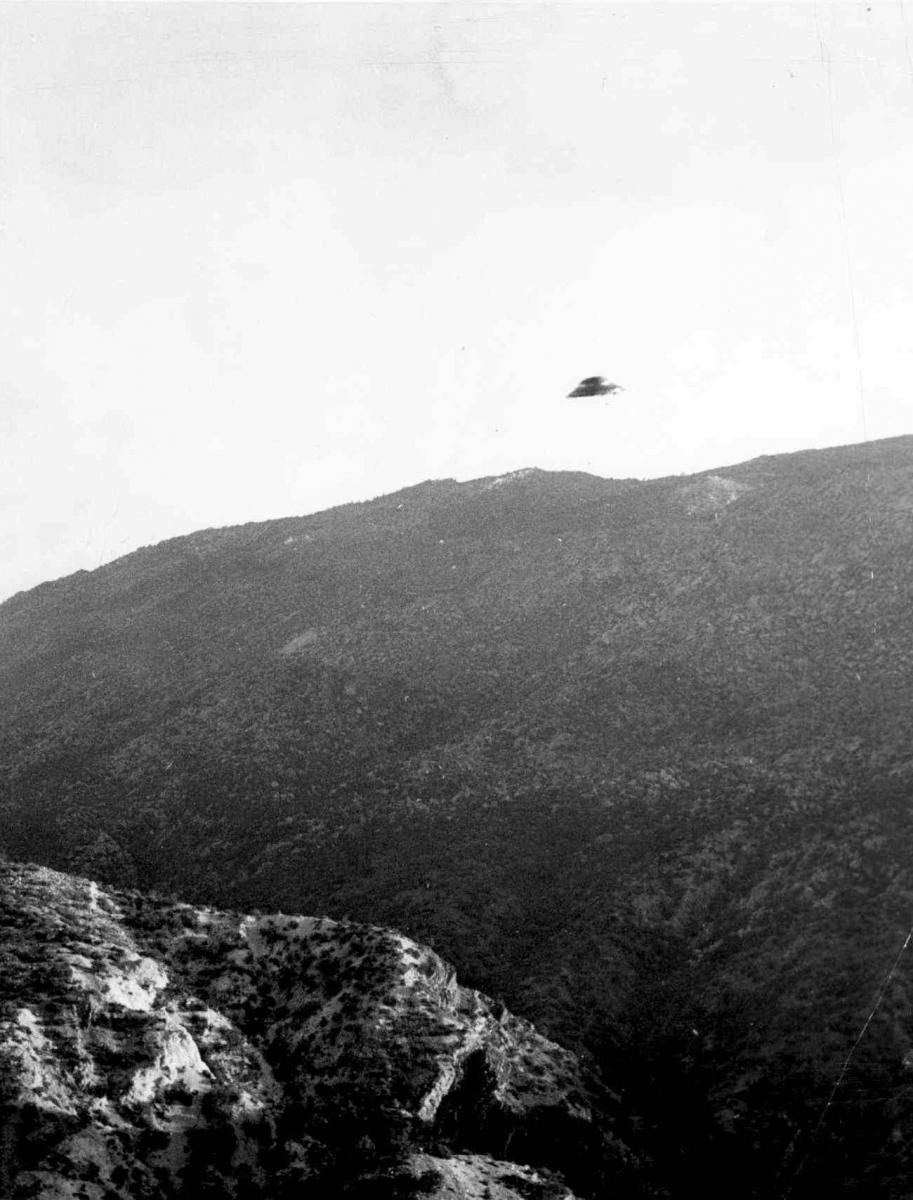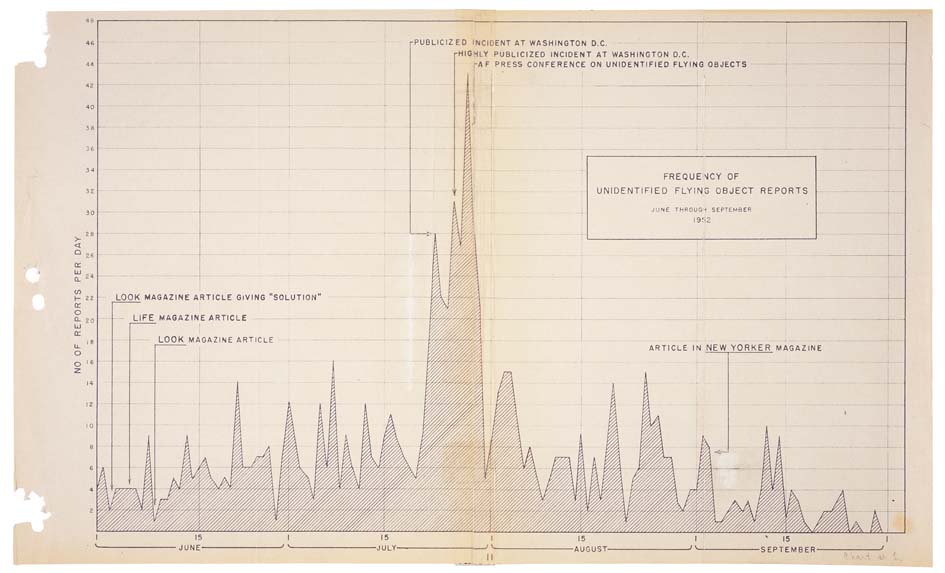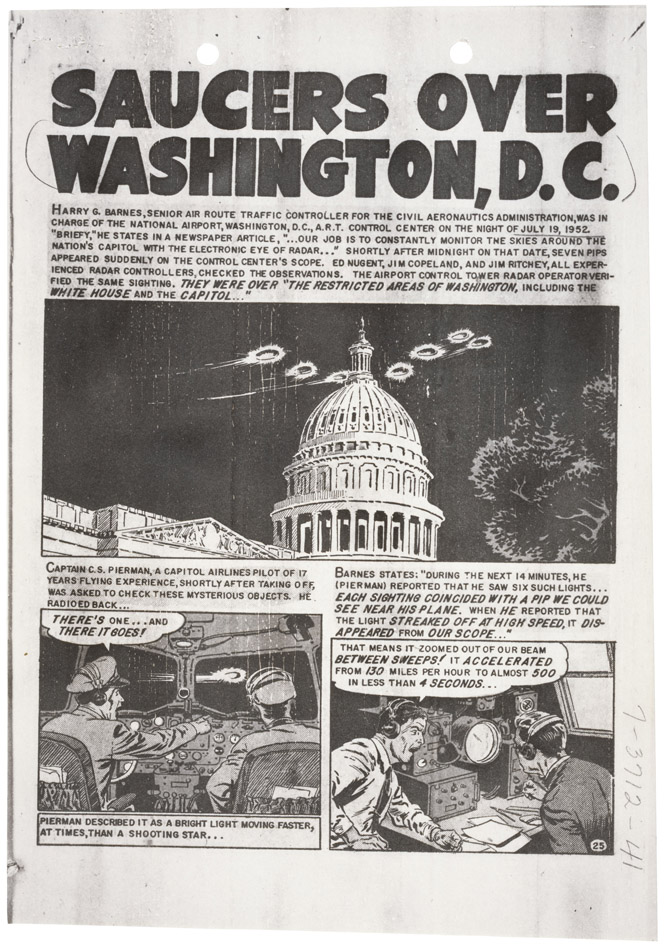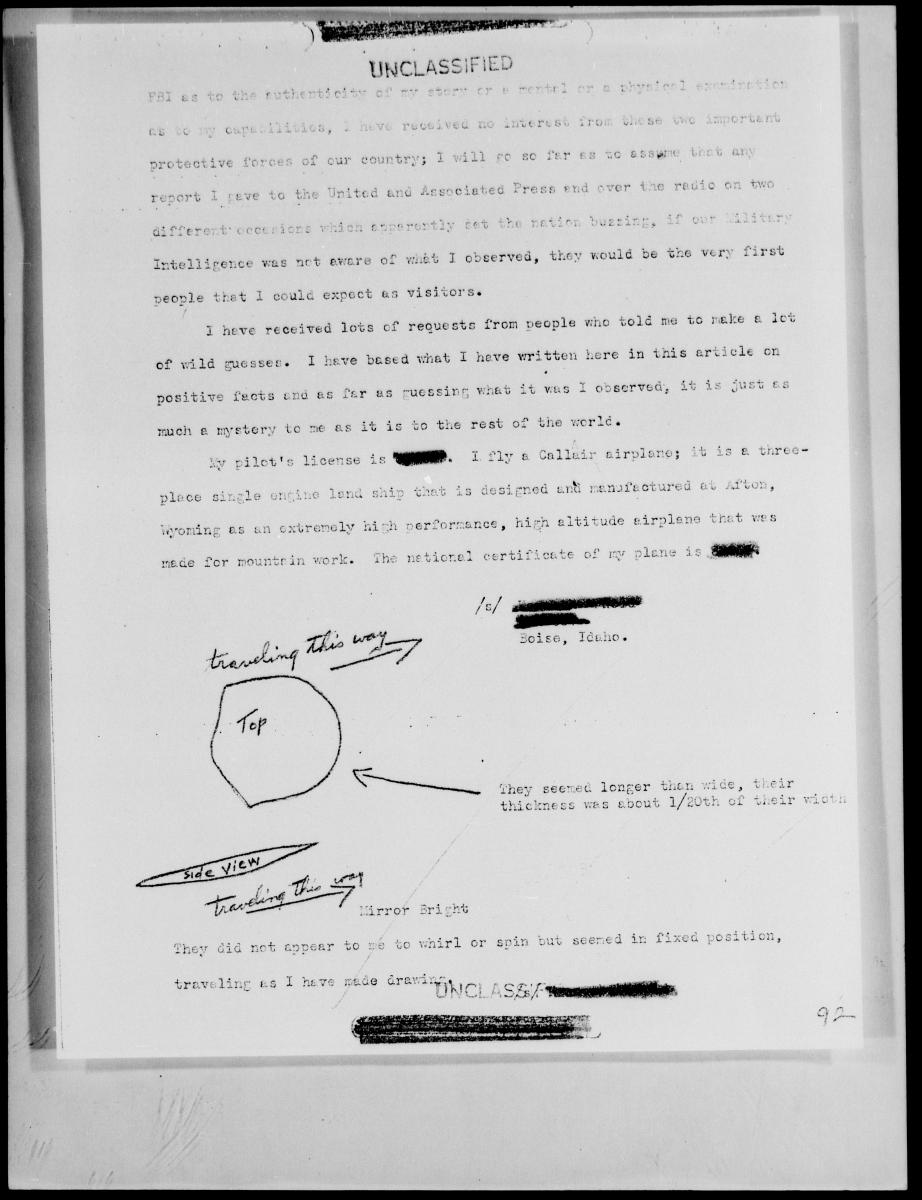
Public Interest in UFOs Persists 50 Years After Project Blue Book Termination
By Jonathan Marker | National Archives News
WASHINGTON, December 5, 2019 – It’s a timeless question: are we alone in the universe? The United States Air Force sought to answer that question through the scientific analysis of 12,618 reports of unidentified flying objects (UFOs) investigated under three successive projects headquartered at Wright-Patterson Air Force Base in Dayton, OH. These included Project Sign, beginning in December 1947 and ending in February 1949; Project Grudge, a scaled-down continuation of Sign that ended in August 1949; and Project Blue Book, from March 1952 to December 1969—the longest-running iteration of the Air Force’s investigation of UFO sightings.
Today, in recognition of the 50th anniversary of the end of Project Blue Book, the National Archives is displaying a selection of records from the program in the East Rotunda Gallery of the National Archives Museum in Washington, DC. The records, on display through January 16, 2020, are a sample from the thousands of pages of textual records, still pictures, motion pictures, and sound recordings in National Archives holdings relating to Blue Book.
The seminal event that launched modern “UFO hysteria” in the United States occurred on June 24, 1947, in the skies over Washington State. While searching for a downed United States Marine Corps transport plane thought to have crashed on the southwest side of Mount Rainier, private pilot Kenneth Arnold reported that he had observed nine UFOs flying at approximately 1,700 miles per hour. During a subsequent interview with members of the media, Arnold described the objects as “appearing like saucers skipping on water.” News reports shortened the term to "flying saucers," which then became a popular term for UFOs.
The flood of UFO reports in the months following Arnold’s reported sighting caused the Air Force Chief of Staff to order the establishment of a project “to collect, collate, evaluate, and distribute within the government all information concerning sightings which could be construed as of concern to national security” on December 30, 1947. This project, codenamed Sign, evaluated 243 reported UFO sightings. However, the results were inconclusive, as stated in the February 1949 report: “No definite and conclusive evidence is yet available that would prove or disprove the existence of these unidentified objects as real aircraft of unknown and unconventional configuration.”
The Air Force’s follow-on project, Grudge, evaluated 244 reports of UFO sightings. In August 1949, the Air Force concluded that the UFO reports were misinterpretations of natural phenomena, man-made aircraft, fabrications, or hoaxes.
UFO reports continued to mount, however, and so did Cold War tensions with the Soviet Union. Air Force Director of Intelligence Maj. Gen. Charles P. Cabell ordered Project Blue Book in March 1952. Blue Book operated until December 17, 1969, when Secretary of the Air Force Robert C. Seamans, Jr., terminated the project, and operations officially ended in January 1970.
The Air Force retired its records concerning investigations of UFOs and transferred them into the custody of the National Archives in 1975. However, as archivist Joseph Gillette explained in a three-part series of Pieces of History blog posts concerning Project Blue Book, in taking custody of the investigation files from the Air Force, the National Archives also inherited responsibility for protecting personally identifiable information contained therein.
After an extensive interagency partnership between the two entities to redact personally identifiable information from Blue Book case files concluded in the spring of 1976, the collection was made available for public research.
The files held by the National Archives contain the information the Air Force gathered about specific UFO sightings. Each case file relates to one sighting or to a group of closely related sightings. The files contain reports from UFO observers, correspondence between these observers and the Air Force, newspaper and magazine clippings, and reports of analysis of photographs and physical evidence.
Some reports were submitted by letter or telegram, but most reports of sightings were submitted on an Air Force questionnaire that contains the name and address of the observer, the date and hour of the sighting, and a description of what the observer saw. Each case file contains a control sheet that summarizes the sighting report and shows the Air Force explanation and conclusions for the sighting.
Related story: Do Records Show Proof of UFOs?



